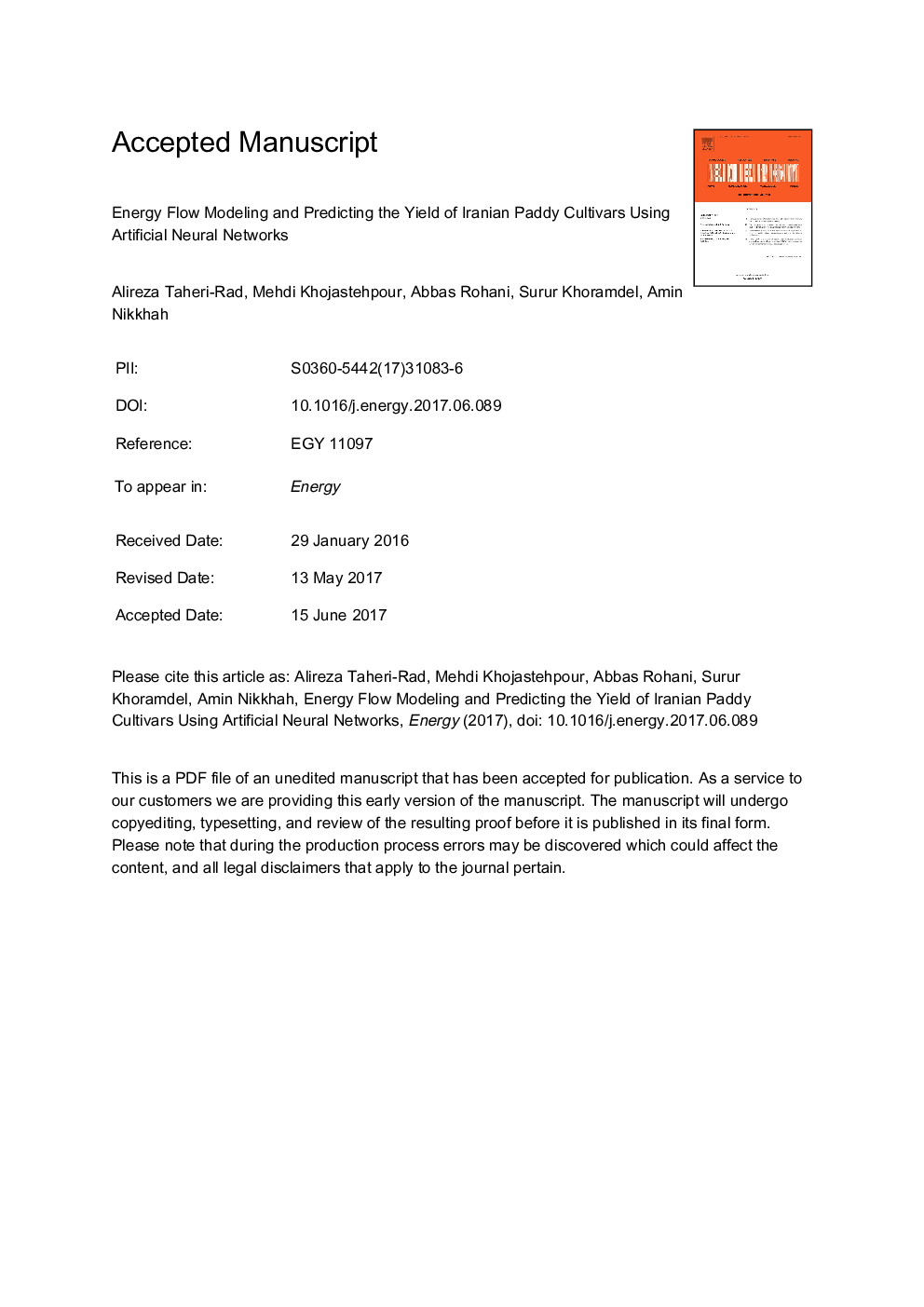| Article ID | Journal | Published Year | Pages | File Type |
|---|---|---|---|---|
| 5476409 | Energy | 2017 | 37 Pages |
Abstract
The aim of this study was to model the energy flows for the production of different paddy rice cultivars in Golestan province of Iran using Cobb-Douglas (CD) model and artificial neural network (ANN). The studied energy inputs were human labor, agricultural machinery, diesel fuel, seed, biocide, chemical fertilizers, farmyard manure and electricity. The results indicated that the total energy consumption of paddy farms for high-yielding long grain (H-YLG) and high-grade long grain (H-GLG) paddy production were 108,392 and 89,835 MJhaâ1, respectively. Also, CD model and sensitivity analysis of energy inputs on paddy yield showed that the impacts of human labor, biocide and chemical fertilizers inputs on paddy yield were higher than the other inputs. The ANN results highlighted that the best model consisted of an input layer with eight inputs, one hidden layer with 25 neurons and an output layer (8-25-1 topology) for both H-YLG and H-GLG paddy cultivars. The results obtained from the comparative study of CD and ANN models for predicting the amount of H-GLG paddy production revealed that the ANN model with the determination coefficient (R2) of 0.99 and the root mean square error (RMSE) of 1.93 kgha1 estimated the outputs more accurately than the CD model. Besides, the ANN model estimated more accurate and precise outputs than CD model for predicting the production of H-YLG.
Keywords
Related Topics
Physical Sciences and Engineering
Energy
Energy (General)
Authors
Alireza Taheri-Rad, Mehdi Khojastehpour, Abbas Rohani, Surur Khoramdel, Amin Nikkhah,
